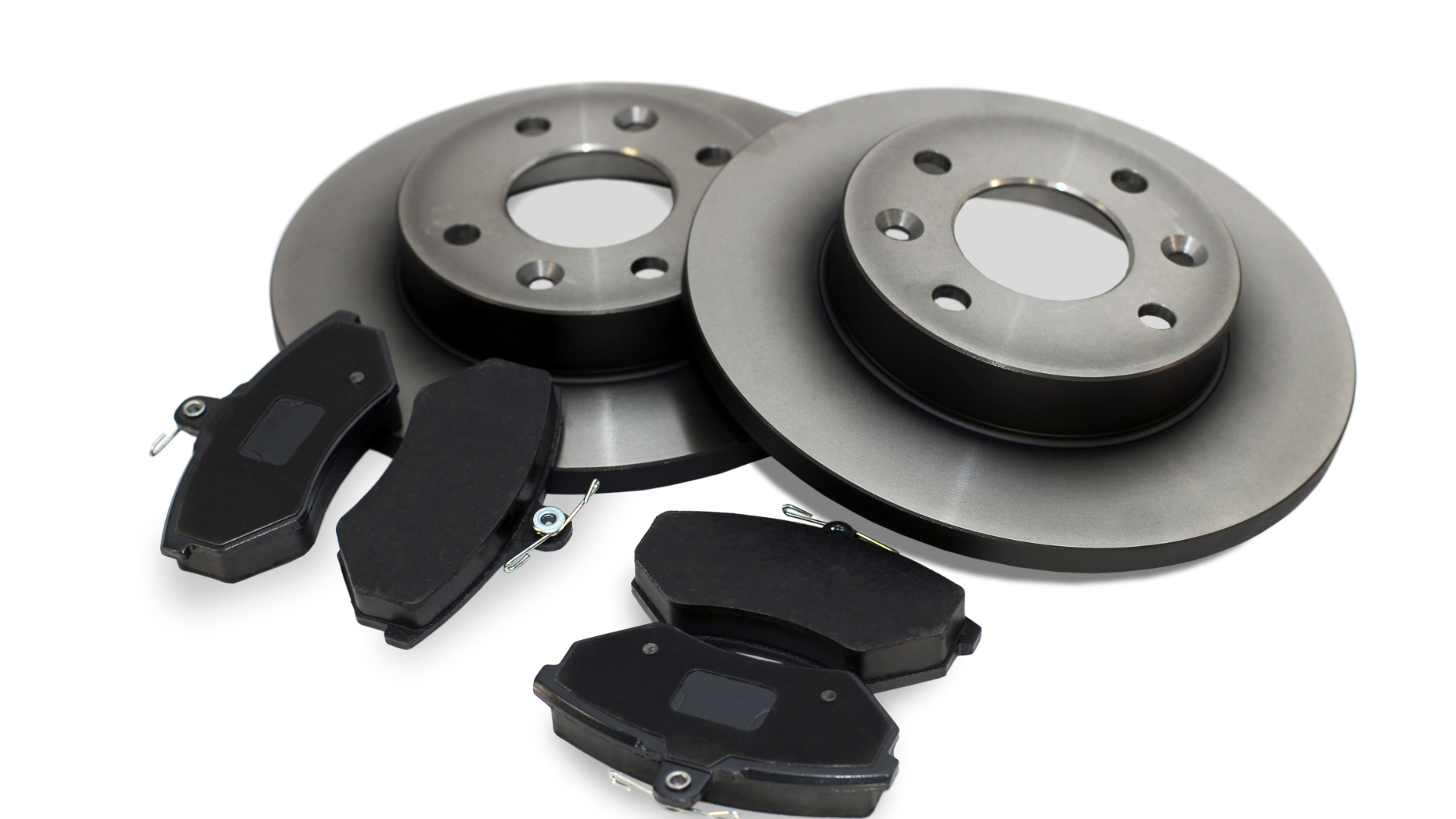When to Know It's Time for New Brake Pads

Your vehicle’s brake pads are an integral part of its safety system. Knowing when they need to be replaced can prevent accidents and save you from costly repairs. In this blog, we’ll explore the signs that indicate your brake pads might need a change, and provide some simple tips to keep your brakes in top condition.
Understanding the Role of Brake Pads
Brake pads play a critical role in your vehicle’s braking system. They press against the brake rotors to slow down and stop your car. Understanding their function can help you recognize when they need to be replaced.
When you step on the brake pedal, a hydraulic system transmits the pressure to the brake calipers. The calipers then force the brake pads against the rotating rotors, creating friction that slows down the wheels. This process is crucial for controlled and safe stops. The friction material on the brake pads wears down over time, necessitating their replacement to maintain optimal braking performance.
The materials used in brake pads vary. Some are made from organic compounds, others are metallic, and some are ceramic. Each type of brake pad has its own advantages and disadvantages, impacting longevity, performance, and noise levels. For example, ceramic brake pads are known for their quiet operation and long lifespan but might be more expensive than organic variants. Knowing the type of brake pads your vehicle has can help you anticipate when they may need to be replaced.
Telltale Signs Your Brake Pads Need Replacing
There are several clear indicators that your brake pads may be wearing out. These signs include squeaking or squealing noises, reduced braking performance, a vibration in the brake pedal, and a warning light on your dashboard.
One of the first signs you might notice is a squeaking or squealing noise when you apply the brakes. This is often caused by metallic wear indicators built into the brake pads. These indicators are designed to make noise to alert you that the pads are getting too thin and need replacement. If you hear this noise consistently, it's crucial to have your brake pads inspected to avoid further damage to the braking system.
Another significant sign of worn brake pads is a noticeable reduction in braking performance. If your vehicle takes longer to come to a complete stop or the brakes feel less responsive, it could be due to thinning brake pads. This reduced performance is not only a potential hazard but can also indicate that other components of the braking system may need inspection and servicing. Immediate attention can help prevent costly repairs down the line.
A vibration in the brake pedal is another telltale sign that something is amiss with your brakes. This can occur if the brake pads are unevenly worn or if the rotor has become warped. When you feel a vibration or pulsation, especially when applying the brakes at high speed, it's essential to get your braking system checked. Ignoring this can lead to more serious issues and can compromise the safety of your vehicle.
Lastly, many modern vehicles are equipped with a brake pad warning light on the dashboard. This light illuminates when the sensors detect that the brake pad material is below a certain thickness. Paying attention to this warning can prevent further damage to the braking components. If the light comes on, it’s a clear indication that you need to schedule a brake inspection as soon as possible.
Visual Inspection of Brake Pads
One of the best ways to determine if your brake pads need to be replaced is to visually inspect them. Look for a minimum thickness of about a quarter-inch. If they are thinner, it's time to get them changed.
To inspect your brake pads, you might need to remove the wheels of your vehicle. Once the wheels are off, you can see the brake pads through the caliper. Look closely and measure the thickness of the pad material. If you notice that the pad is worn to about a quarter-inch or less, it’s a clear sign that they need replacing. Regular inspections can help you catch the wear before it leads to more significant issues.
In some cases, you might notice visible grooves or scoring on the brake pads or rotors. This can indicate that your pads are worn unevenly or damaged by debris. Such grooves can reduce the effectiveness of the brakes and may also lead to rotor damage. If you see any irregularities in the appearance of the brake pads, it’s wise to consult a professional mechanic for a thorough evaluation and potential replacement.
How Often Should You Check Your Brake Pads?
Regular maintenance is key to vehicle safety. It’s recommended to check your brake pads every 12,000 to 15,000 miles, or at least once a year. Consistent checks can help catch wear and tear before it becomes a serious issue.
While this is a general guideline, driving habits and conditions play a significant role in how quickly brake pads wear out. For instance, frequent city driving with lots of stop-and-go traffic can cause brake pads to wear out more quickly. Similarly, driving in hilly areas where you use the brakes more often can accelerate wear. Adjust your inspection schedule based on your driving conditions and habits to ensure optimal braking performance.
On the other hand, if you mostly drive on highways with little braking, your brake pads might last longer. However, regardless of your driving habits, it’s essential to be vigilant for any signs of wear, such as unusual noises or a spongy brake pedal. Regular inspections and paying attention to these signs will help keep your braking system in top shape and ensure your safety on the road.
The Risks of Ignoring Worn Brake Pads
Driving with worn brake pads can lead to reduced braking efficiency and increased stopping distances, which are serious safety risks. Additionally, neglecting brake pad maintenance can result in expensive damage to your brakes and rotors.
When brake pads wear down too much, the metal backing of the pads can make contact with the rotors. This metal-on-metal contact not only reduces the efficiency of your brakes but also causes excessive damage to the rotors. Replacing rotors is significantly more costly than replacing brake pads, so timely maintenance can save you money in the long run. Moreover, compromised braking performance can lead to dangerous driving situations, increasing the risk of accidents.
Ignoring brake pad wear can also lead to a condition known as ‘brake fade.’ This occurs when the brake pads and rotors heat up excessively, reducing their ability to generate friction. Brake fade can result in longer stopping distances and a spongy brake pedal feel. It’s especially hazardous during emergency braking situations, where effective stopping power is crucial. Ensuring your brake pads are in good condition will prevent this dangerous scenario and keep you safe on the road.
In addition to the safety and financial implications, worn brake pads can also negatively impact other components of your vehicle’s braking system. The added stress on calipers, wheel bearings, and even the steering system can lead to more extensive and costly repairs. By keeping up with regular maintenance and addressing brake pad wear promptly, you can avoid these additional expenses and ensure the longevity of your vehicle’s braking system.
For more detailed information on the importance of timely brake maintenance, you can refer to Brake Replacement – Or Repair?. This resource provides valuable insights into the differences between brake repair and replacement and helps you understand when each is necessary. Being informed about your vehicle’s braking system can empower you to make better maintenance decisions and keep your vehicle in optimal condition.
Stay Safe with Well-Maintained Brake Pads
Keeping your brake pads in top condition is crucial for your safety on the road. By paying attention to warning signs and regularly inspecting your brake pads, you can ensure your vehicle remains safe and reliable. Remember, it's always better to be proactive rather than reactive when it comes to vehicle maintenance.



